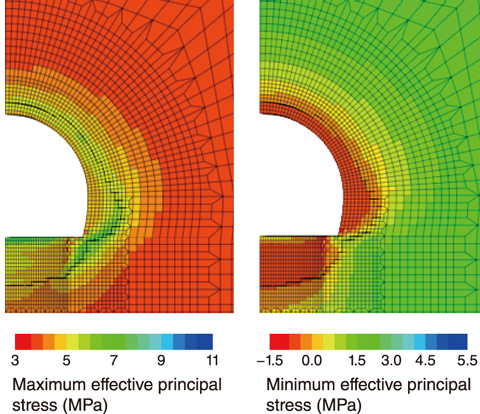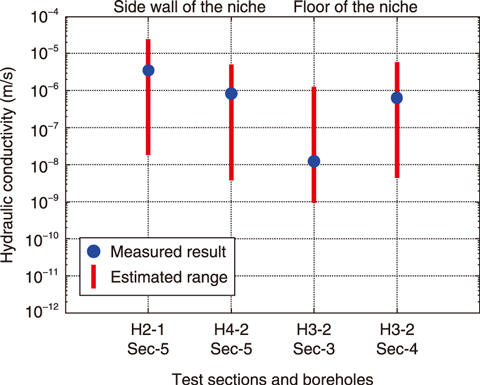
Fig.8-16 The studied site and layout of hydraulic testing

Fig.8-17 Contour map of effective stress around Niche No.3

Fig.8-18 The estimated and measured highest potential hydraulic conductivities in the EDZ
The hydraulic conductivity around a repository of geologically disposed high-level radioactive waste is thought to be increased due to the stress redistribution during facility excavation. This stress-redistributed zone is called the excavation damaged zone (EDZ), and can provide a pathway for the migration of radionuclides around the repository. Thus, it is important to develop a method to predict the hydraulic conductivity in the EDZ applying the result of surveys performed prior to the excavation (surface-based investigation) for the efficient safety assessment.
Although researchers have estimated the hydraulic conductivity in the EDZ, the developed models cannot do so based on the result of the surface-based investigation. The highest potential hydraulic conductivity in a fault or natural fracture can be estimated using the mean stress index (MSI), which is the ratio of the effective mean stress to the tensile strength of rock. Therefore, this work aimed to estimate the highest potential hydraulic conductivity in the 350 m gallery of the Horonobe underground research laboratory using the MSI (Fig.8-16(a)).
Hydraulic tests were performed to measure the hydraulic conductivity in the EDZ in Niche No.3 (Figs.8-16(b) and (c)), and a hydro-mechanical coupling analysis was performed to simulate the maximum and minimum effective principal stress during niche excavation. The resulting distribution of effective stress is shown in Fig.8-17. From the analyzed effective stress distribution and tensile stress of rock, the highest potential hydraulic conductivity corresponding to the hydraulic test sections were estimated using the MSI model.
The estimated ranges of the highest potential hydraulic conductivity corresponding to the hydraulic test sections in the EDZ (![]() ) are shown along with the hydraulic test results (
) are shown along with the hydraulic test results (![]() ) in Fig.8-18. The estimated range has 2.5 orders of magnitude, as the MSI model considered the heterogeneity of hydraulic conductivity among fractures. The estimated ranges of highest potential hydraulic conductivity overlapped with the measured results on both the sidewall and below the floor of the niche. Thus, the highest potential hydraulic conductivity should be estimated based on the result of a surface-based investigation when applying the MSI model.
) in Fig.8-18. The estimated range has 2.5 orders of magnitude, as the MSI model considered the heterogeneity of hydraulic conductivity among fractures. The estimated ranges of highest potential hydraulic conductivity overlapped with the measured results on both the sidewall and below the floor of the niche. Thus, the highest potential hydraulic conductivity should be estimated based on the result of a surface-based investigation when applying the MSI model.